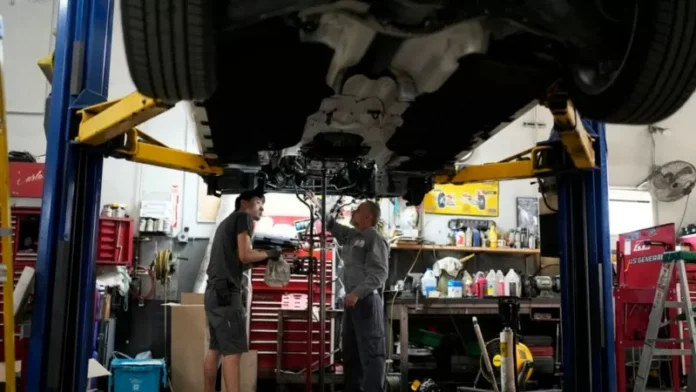WASHINGTON – Despite ongoing concerns about the state of the U.S. economy, September brought a much-needed boost in the form of 254,000 new jobs added to the workforce. This figure far exceeded economists’ expectations and marks a significant increase from the 159,000 jobs added in August. Furthermore, the unemployment rate dropped for the second consecutive month, from 4.2% in August to 4.1% in September, according to a report released by the Labor Department on Friday.
These latest numbers demonstrate that companies are still confident enough to fill positions and support steady hiring, despite the pressure of high interest rates. While some employers have become more cautious about hiring, few are laying off workers. This is an encouraging sign that the economy is still strong.
In addition to the impressive job growth in September, the Labor Department also revised its estimates for July and August, adding an additional 72,000 jobs to the previous figures. This is a positive indication that the trend of job growth is continuing and becoming more widespread. The hospitality and healthcare industries saw the most growth, with 69,000 and 45,000 new jobs added respectively. Government agencies, social assistance employers, and construction companies also contributed to the overall increase. The professional and business services sector, which had previously experienced a decline in jobs for three consecutive months, also saw a gain of 17,000 jobs.
Wages also showed positive growth, with an increase of 0.4% from August, slightly lower than the 0.5% gain in the previous month. Compared to last year, hourly wages rose by 4%, up from a 3.9% increase in August.
The progress made in taming inflation has led the Federal Reserve to cut its benchmark interest rate by 0.5%, the first rate cut in over four years. The Fed has indicated that further cuts may be necessary in the coming months to help bolster the job market. With the strong job report released on Friday, it is likely that the Fed will reduce its key rate by more typical quarter-point increments.
Chief economist at Comerica Bank, Bill Adams, noted that the September jobs report shows a “nice bump” in labor demand at the beginning of fall. He also added that the U.S. economy is growing solidly in 2024, despite a slowdown in inflation.
The resilience of the economy is a relief for many, as economists had previously predicted that the Fed’s efforts to control inflation would lead to a recession. However, the economy continued to grow even in the face of higher borrowing costs for consumers and businesses. This has resulted in what many are calling a “soft landing,” where the economy is able to maintain growth while also taming inflation.
As we approach the November 5th presidential election, the state of the economy is weighing heavily on voters’ minds. Despite the overall positive job report, many Americans are still frustrated with high prices, which are on average 19% higher than they were in February 2021. This has been a political burden for Vice President Kamala Harris in her race for the White House against former President Donald Trump.
The October jobs report, which will be released just four days before Election Day, may be impacted by the effects of Hurricane Helene and a strike by Boeing machinists. However, most indicators suggest that the economy is still performing well. In the last quarter, the U.S. economy grew at a vigorous 3% pace, and forecasts predict a slower but healthy 2.5% growth for the just-ended July-September quarter.
The Institute for Supply Management also reported that the services sector, which represents more than 70% of U.S. jobs, grew for the third consecutive month in September at a surprisingly fast pace. Consumer spending and business investment have contributed to this growth.
Despite the slowdown in hiring, job security in the U.S. remains high. Layoffs are at a record low, and the number of people filing for unemployment benefits is also at historically low levels. While some employers may be hesitant to expand their payrolls, they are also reluctant to let workers go. This could be due to many companies being caught off guard by the rapid rebound of the economy from the pandemic recession. Additionally, the number of job openings has declined from a peak of 12.2 million in March 2022 to 8 million in August.
It appears that workers have also noticed the change in the job

